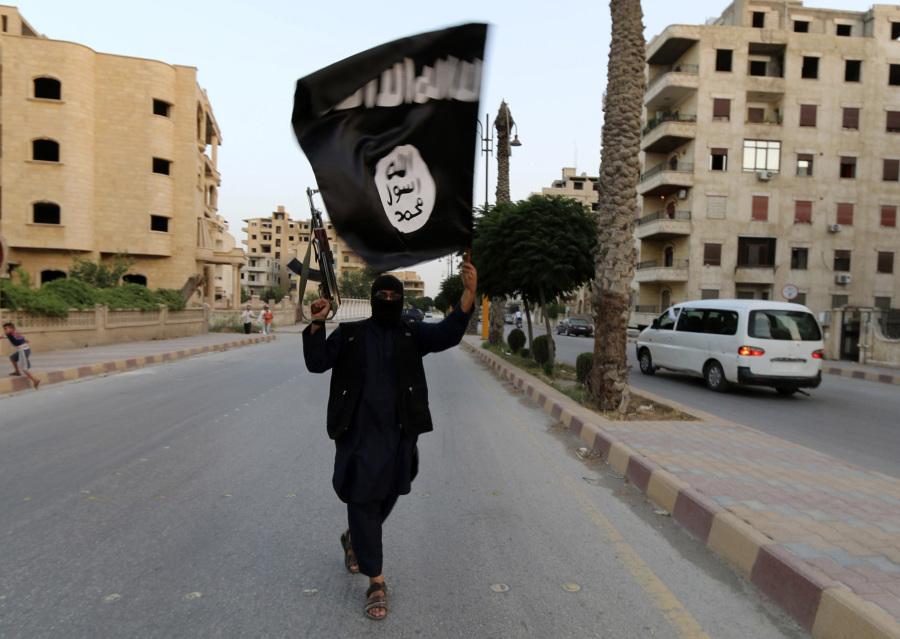The Islamic State of Iraq and Syria (ISIS) has been growing into a bigger threat to the world the longer it exists, whereas a few years ago Al Qaeda was the major concern to the Western World. Although the two terrorist organizations have some similar beginnings and ideas, the way they execute their ideas tend to differ.
Al Qaeda is the encompassing force for most of the terrorist groups in the Middle East. They help the smaller groups (the ones that do the damage) gain funding, support and followers. This is also why people don’t see Al Qaeda in the news as much anymore; they mostly are around to help train other groups to carry out terrorist activities for them. One of those smaller groups that was part of Al Qaeda was ISIS until Al Qaeda kicked them out because their views didn’t match Al Qaeda’s overall beliefs.
Even though ISIS and Al Qaeda both want to spark fear in their enemies, and reestablish the Islamic caliphate, the way they follow through with their plans differs significantly. ISIS takes actions a few steps further than Al Qaeda, according to social studies teacher Mr. Dennis Duffy, since “ISIS uses the brutality of beheading people on film, about committing great violence and systematic raping and pillaging of areas, selling women into slavery…and all those kind of stuff precisely to recruit. They are basically saying, ‘Look how tough we are! We can take it to the United States, we can make the United States back down. They can’t touch us.’” ISIS is devoted to recruitment through violence whereas Al Qaeda is looking to cause fear from their attacks.
In addition, ISIS uses people’s insecurities to encourage them to join their group. According to social studies teacher Mr. Brian Voss, “there were advertisements about ISIS saying ‘Ladies come here. We will give you a husband, we will give you a family. If you can’t have it in your home country, join ISIS. We will give it to you.’ Pulling on the heartstrings of having a family to people that otherwise wouldn’t fit in society. Going back to the cultish idea that you get the instant emotional gratification of being a part of something.” A couple of ISIS‘s main priorities are obsessing over the number of followers they have within their group, along with challenging the United States.
With recruitment, ISIS also utilizes social media, including Twitter and an app they developed, called The Dawn of Glad Tidings. According to The Atlantic, Dawn is an app that publishes news about the latest land holdings of ISIS. The app also asks for personal information about its users; for example, it tweets on the user’s profile and gains access to photos and Wi-Fi, among other activities.
Twitter is also a major tool for ISIS, since they post updates about their violent activities and details about the beheadings to intimidate the Western world. They also infuse propaganda on their various Twitter accounts in order to get others to join them.
On the other hand, Al Qaeda doesn’t utilize Twitter because they rely on older platforms of social media, like websites and forums, which have generally less traffic, according to National Journal. They usually use social media to promote their message.
Also, ISIS actually holds territory, while Al Qaeda doesn’t. Although Al Qaeda talks about spreading Islam, ISIS is making it a reality by seizing territories in Iraq and Syria. And holding territory is how their funding differs, too.
ISIS uses the oil wells in their seized territory to make profit by selling it at discounted rates behind closed doors. Al Qaeda gains funds through Muslim donors, which is also why their beliefs aren’t as radical as ISIS’s: they have to appeal to the whole spectrum of these Islamic terrorist groups.
Overall brutality, however, is what draws the boundary between these groups. Since Al Qaeda is solely against the West and religiously against Christians, it makes people more willing to donate to them because their attacks are towards the West. But, for ISIS, they attack anyone who is in their realm: Jews, Christians, Arabs, and Muslims who are under their forces. ISIS wants to ignite terror into not only the Western world, but to the people they are taking land from. They desire to be a monstrous force to reckon with.
Mr. Duffy summarized the differences and similarities: “They both want to reestablish the Islamic caliphate as their ultimate end, and see the world, or a substantial portion of the world, under Islamic leadership. . . the recruitment tools are different, their systematic use of brutality is different, their structure is different, and frankly, their funding is different as well.”




![Mr. Abullh Ali, manager/assistant, helps open Queen Yemeni Coffee in downtown Libertyville at 606 North Milwaukee Ave. With the help of employees such as manager and LHS senior Yousef Taha, they are able to bring the Yemeni and Ethiopian culture to Libertyville by using their Queen spices, cinnamon and cardamom in their drinks such as Adani Chai, which is inspired by Sheda, the Queen of Yemen and Ethiopia. “The history of our coffee [is] a long history and we believe that Yemen and Ethiopia started the coffee and we are bringing something unique to the community,” Mr. Ali said.](https://www.lhsdoi.com/wp-content/uploads/2025/04/Photo-1-1200x800.jpg)



